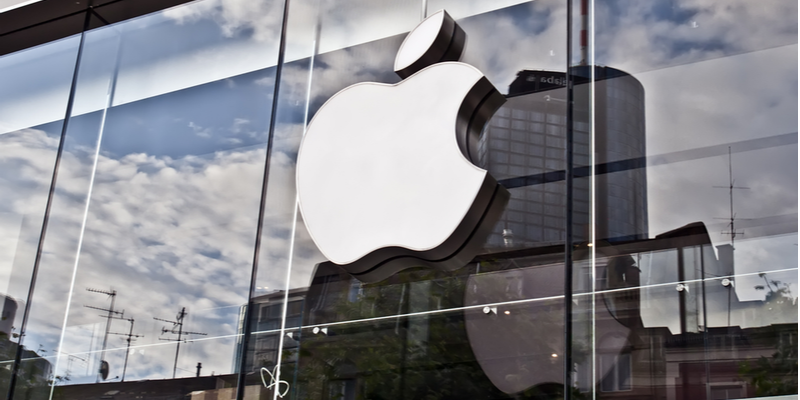Is RBI creating regulations for peer-to-peer lending in India?
Finding alternative sources of investment is picking up as a phenomena in India. With limited venture funds and resource capital available, entrepreneurs and businesses are being compelled to seek out different avenues of funding such as peer-to-peer lending (P2P) for their operations.

Looking at the advent of this online industry and its potential impact, regulatory bodies like SEBI and RBI are having to address this industry. While SEBI has made the first move, and is working on establishing regulations for the unregulated crowdfunding sector, RBI isn’t too far behind, and has published a discussion paper, based on public opinion on the future course of action for the P2P lending market.
The paper basically attempts to assess the various business models that are operational both domestically and internationally, with the legal framework within which institutions like P2P lending and crowdfunding operate.
Before we get deeper into the potential of these markets, let’s look into a few fundamentals.
What is crowdfunding?
Crowdfunding is a method of funding projects or ventures through money raised by large number of people with an online portal typically acting as an intermediary. This could also be seen as charitable donations.
A study commissioned by World Bank says that the global crowdfunding market could reach between $90 and 96 billion by 2025, roughly 1.8 times the size of the global venture capital industry today.
What is P2P lending?
The paper describes P2P lending as a form of crowdfunding used to raise loans paid back with interest, mostly done via an online platform that matches lenders with borrowers.
Keeping a few pointers in mind:
- interest rate may be set by the platform or by mutual agreement between the borrower and the lender
- fees are paid to the platform by both the lender as well as the borrower. This fees include:
- borrowers pay an origination fee (either a flat rate fee or as a percentage of the loan amount raised) according to their risk category
- lenders may have to pay an administration fee and an additional fee to the platform if they choose to use any additional service (e.g. legal advice, etc.)
- Before entering, the platform does a thorough assessment of the borrower’s creditworthiness
Since crowd funding is equity, debt-based and fund-based, it falls under the direct sight of capital markets regulator (SEBI), but P2P lending falls within the domain of the Bank.
According to the data by Peer to Peer Finance Association (P2PFA), the cumulative lending through P2P worldwide has grown from £2.2 million in 2012 to £4.4 billion in 2015.
Is RBI announcing regulations?
The RBI has proposed to bring P2P lending platforms under the purview of Reserve Bank’s regulation by defining it as a Non-Banking Financial Company (NBFC) and issuing a notification in consultation with the Government of India.
Further, according to the document, the proposed regulation is proposed to encompass the following:
Permitted activity
- platform could be registered only as an intermediary i.e. the role of the platform would be limited to bringing the borrower and lender together
- platforms will be prohibited from giving any assured return either directly or indirectly.
- platforms will be allowed to opine on the suitability of a lender and creditworthiness of a borrower
- Adequate regulations on advertisements will also be put in place
- funds will have to necessarily move directly from the lender’s bank account to the borrower’s bank account to avoid the threat of money laundering
- guidelines would also prohibit the platforms being used for any cross-border transaction in view of FEMA provisions relating to transactions between residents and non-residents.
Customer Interfacing
The RBI expects P2P platforms to follow the following guidelines while interacting with customers:
- confidentiality of the customer data and data security would be the responsibility of the platform
- mandatory transparency in operations, with adequate measures for data confidentiality and minimum disclosures to borrowers and lenders
- platforms might also be discouraged from promising outrageous and extraordinary returns, implying any form of guarantee
- being recovery agents, these entities will have to comply with NBFC recovery regulations for their recovery practices
Finally, P2P platforms are expected to have grievance or complaint redressal mechanism, with regular reports to be sent to RBI on their financial position, loans arranged each quarter, complaints, etc.
Moreover, the prudential requirements include a minimum capital of Rs 2 crore with leverage ratio prescribed for platforms to not expand with indiscriminate leverage.
On governance requirements, the RBI may include criteria for promoters, directors and CEO, with guidelines to have reasonable number of board members having financial backgrounds.
The RBI also hints towards making a requirement for the P2P platform to have a brick-and-mortar place of business, while having management and operational personnel of the platform to be headquartered within the country.
To ensure business continuity, the platform is expected to have adequate risk management systems for its operations. This may include:
- back-up for the data needs to be put in place since the platform also acts as a custodian of the agreements/cheques, etc.
- in case of failure, the platform should have an alternative arrangement in the form of an agreement for continuation of its operations
The RBI also doesn’t deny the scope of having P2P platforms adopt company structure, with no other entity except for a company undertaking such activities. This could be because if P2P platforms are run by individuals, proprietorship, partnership or Limited Liability Partnerships, it would not fall under the jurisdiction of RBI.
The Scenario in India
According to reports from Tracxn, in 2015, 20 new online P2P lending companies were launched taking the count to 30 P2P lending startups in the country. This continues to be a minuscule amount with countries like China reported to have crossed 2,000 of such platforms.
These lending platforms are largely technology-oriented companies acting as aggregators. Rather than be simple aggregators, here are the other business models for these platforms:
- Platforms have due diligence carried out on their platform before an activity takes place
- Companies often follow a reverse auction model in which the lenders bid for a borrower’s loan proposal and the borrower has the freedom to either accept or reject the offer.
- Platforms provide several additional services like credit assessment, recovery, collection of payments, etc. In most cases, the platform moderates the interaction between the borrower and the lender.
Although RBI notices the soft recovery practices, it is disapproving of coercive methods, if any, used by these platforms.
On one hand, experts argue that if this sector, which RBI recognises as a disruptor, is left unregulated, there are high possibilities of unhealthy practices cropping up, while on the other, some argue that regulations might stifle the growth of this sector.
But one thing is clear. With RBI’s plans to introduce regulations already n full swing, the bigger question to be asked is – Will RBI be able to match up the regulations with flexibility to not hinder the growth of this growing sector?








![[Funding alert] Space tech startup Pixxel raises $5M seed funding from Blume, growX, and Lightspeed](https://images.yourstory.com/cs/2/a9efa9c02dd911e9adc52d913c55075e/Imagekh9x-1597755580189.jpg)